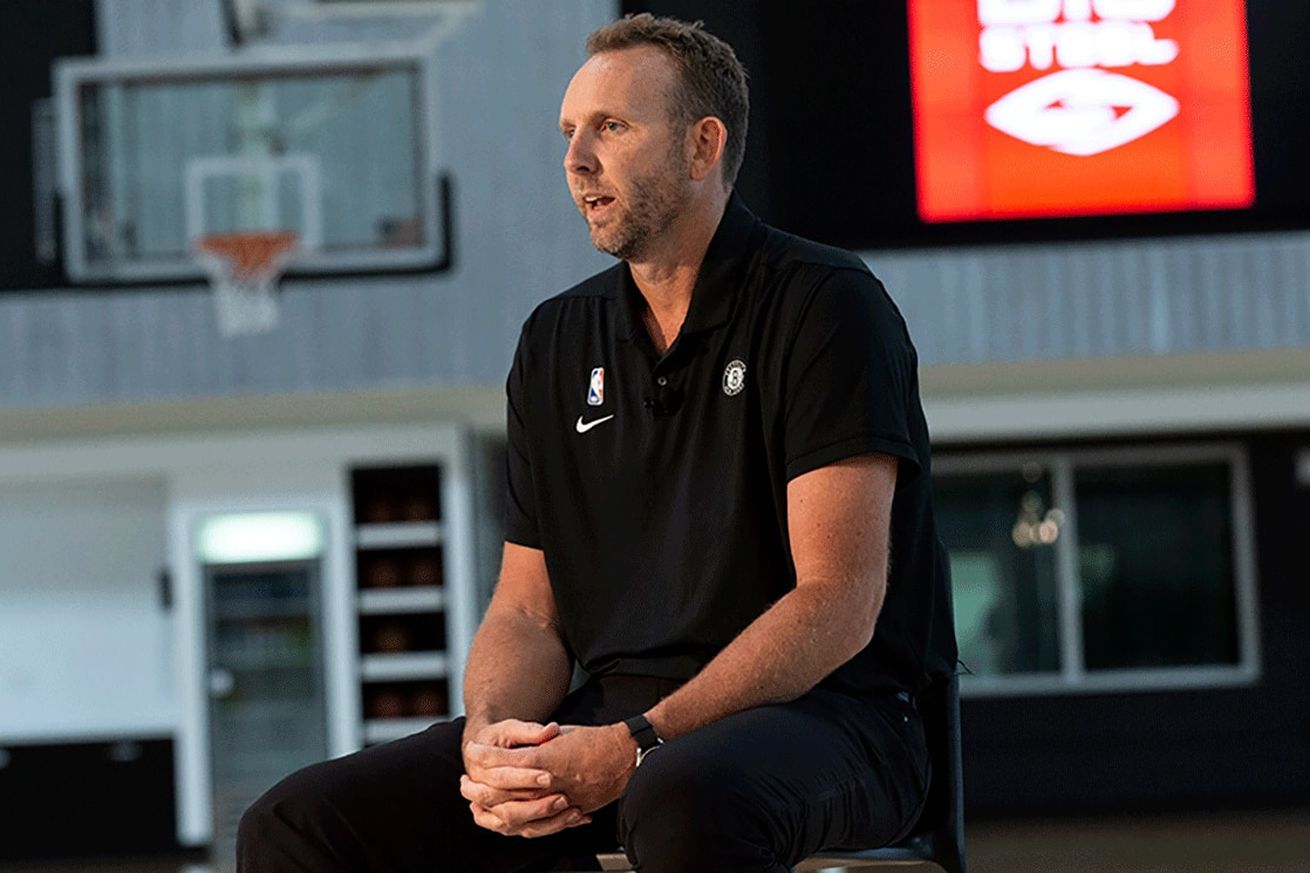
In the game within the game, Nets still playing…
When you have all the cards, you don’t bid against yourself.
That is in essence the Brooklyn Nets strategy for the remainder of free agency, particularly in the case of Cam Thomas, the team’s big free agent, as Jake Fischer reported Thursday on The Steinline, Marc Stein’s substack.
More than two weeks into free agency, many executives and agents around the league are still openly wondering: What is Brooklyn doing with its cap space?
Fischer first eliminates one rumored possibility, a back-to-the future move: tendering offer sheets to any of the league’s big restricted free agents, as they did back in Sean Marks first rebuild.
The answer, most certainly, is not using it to pursue restricted free agents. Sean Marks’ front office has been known to do so in the past, furnishing lucrative offer sheets to the likes of Otto Porter Jr, Tyler Johnson and Allen Crabbe.
Not this summer.
Then, Fischer reports that the slow roll strategy extends to Thomas. No rush there. It’s a business and it’s about timing more than anything.
Sources say that the Nets, in fact, have yet to even significantly engage their own restricted free agent: Scoring guard Cam Thomas.
No further details. Nor is Fischer alone in his analysis. Brian Lewis also reported in a tweet Thursday that Nets are in “no hurry”…
And the elephant in the room is Cam Thomas. While #Nets fans are fretting, a league source said the sides are in no hurry, likely like all of the RFAs right now: Josh Giddey, Quentin Grimes and Jonathan Kuminga. #NBA
— Brian Lewis (@NYPost_Lewis) July 17, 2025
Indeed, as Fischer and Lewis have noted, the Nets have the better poker hand in dealing with Thomas. They have a monopoly on cap space in the NBA. Even if a team could scramble and find enough space to make a bid for Thomas, the Nets have the right to match which they could do without much effort. Also, they can sign Thomas outside the cap. They hold his Bird Rights. Then, there’s the market. CamT is a polarizing figure in the NBA. Fischer previously reported that Thomas wants a deal that values him at $30 million a year while a league source told NetsDaily that giving the 23-year-old more than $10 million their “entire off-season goes from being amazing to shitty.”
It should also be noted that the Nets have yet to sign their two other restricted free agents — Day’Ron Sharpe or Ziaire Williams — although they’ve reportedly agreed to two-year, $12 million deals with the second year a team option which is generally seen as a big bargain, particularly in the case of Sharpe. League sources say they are waiting to see how things work out before deciding whether it’s better to use cap space or the $8.8 million room MLE on one of them. Again, no rush.
So if they’re not going to tender offer sheets and not rushing into a deal with CamT, what are they doing? Fischer says they wait, that they still believe they can add more draft assets:
Brooklyn has been active on the trade front instead, finally shipping out long-pursued sharpshooter Cam Johnson, acquiring Michael Porter Jr. and Terance Mann and adding both the No. 22 overall pick in last month’s draft (which was used on Drake Powell) and Denver’s unprotected 2032 first-round pick in the Johnson-for-Porter deal.
Bottom line?
The Nets appear content on slow-rolling the rest of their offseason accounting. They have roughly $24 million available to absorb additional salary in trades that could generate more incoming draft capital while Thomas’ cap hold ($12.1 million) remains on their books.
And things are by no means urgent. Thomas has until October 1 to exercise his one-year, $6 million qualifying offer, that would make him an unrestricted free agent next June, And the Nets aren’t even at the CBA floor, let alone the cap.
Like Golden State’s Jonathan Kuminga, Chicago’s Josh Giddey and Philadelphia’s Quentin Grimes, there isn’t much Thomas can do to force the Nets’ hand without bidders in the marketplace that possess cap space of their own.
Fischer does not provide details on what the Nets are seeking in terms of draft assets or from what team, but they certainly would like to bolster their pick stash in 2026, a draft that is seen as equal or better than 2025 which many draftniks think was the best in 20 years.
They currently have their own, retrieved from the Rockets in the 2024 exchange of picks and two seconds, neither their own. (In 2027, which Jonathan Givony wrote this week is the polar opposite of 2025 and 2026, the Nets will have at least two picks.)
NBA free agency is often wrapped up by this time of year. The Summer League is ending, big decisions have been made and front office types are getting ready to pack their bags for vacation. This year, however, issues with the CBA “aprons” and the lack of cap space other than in Brooklyn has slowed things, particularly for restricted free agents like Thomas. And no one predicted that teams would prefer expensive buyouts and lengthy stretch payments to giving up assets in trades. Damian Lillard, Bradley Beal and DeAndre Ayton all fit in that category.
